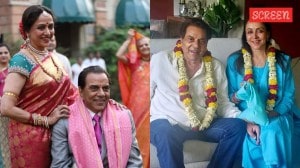Stay updated with the latest - Click here to follow us on Instagram
Tenor of a Reed Player
Flute maestro Pt Hariprasad Chaurasias life and times have been turned into a film directed by his son.
The impishness of playing with a bamboo reed and his tantrakari (technical) style of Hindustani classical music has made Pt Hariprasad Chaurasias contribution to the world of flute and music iconic. This artistry is something his son Rajeev has lived with.
While growing up and travelling with his father,Rajeev had seen the impact of this instrument on people. He was dad,but since he had been put on a pedestal by his audience,I felt a sense of awe and reverence, says Rajeev,co-founder of Explore Travel Channel.
There were moments that enraptured peoples heart and soul as Rajeev saw them well up,fall to his fathers feet and refer to him as Lord Krishnas avatar. It was surreal, he says. Rajeev has now directed Bansuri Guru,a chronological telling of one of the most loved musicians of India. The film,which has been produced by the Films Division of India,will release on April 12 through PVRs Directors Rare.
Bansuri Guru focuses on the seven decades of Chaurasias life through interviews and reconstructions. The writing was on the wall. When a person has such an expansive repertoire of work,the idea to do this was always there, says Rajeev,about his debut film.
For someone born into a family of pehelwans (wrestlers),Chaurasias growing up years were spent in physical exercise. In an akhada,run by his father with an iron hand,life for Chaurasia was all about knocking down his opponents,complemented by a rich diet of milk and butter. After hours,he would use his lung power to coax the notes out of a small bamboo flute.
This would change his life and include flute in the repertoire of Indian classical music in a way it had never existed before. He didnt perform his flute by way of vocal or the khayal style. He included the lengthy alaaps,the jhala,the tihais and brought the quality of a sitar and a sarod in the flute,which is a huge contribution, says Ustad Zakir Hussain in the film.
After his wrestling stint followed by being a typist for Rs 85 a month in Varanasi,Chaurasia moved to Bhubaneswar where he began working with All India Radio. It was here that Bollywood noticed him. Chaurasia played iconic tunes in music director Madan Mohans projects. Along with Pt Shiv Kumar Sharma as the music duo Shiv-Hari they teamed up for films such as Silsila,Lamhe and Chandni. Sharma calls Chaurasia his soulmate.
The film discusses Chaurasias relationship with his guruma Annapurna Devi,daughter of Ustad Alauddin Khan,refused to teach Chaurasia for three years. She said she played the surbahar and couldnt teach the flute. I told her I was there to learn music, says Chaurasia. Devi gave in and thus began his journey of learning the intricacies of Hindustani music.
The film,however,does not touch upon the relationships between Chaurasias first wife Kamala and his second wife Anuradha,a fact Rajeev has chosen to leave out. The narration by Amitabh Bachchan in the beginning and in the end does grab ones attention. The film pulls at ones heartstrings in the second half but the reconstructions fail to create an impact that a film on a legend like Chaurasia should.
I wanted the film to be a cinematic experience
Suanshu Khurana talks to director Rajeev Chaurasia
You dont come from the world of filmmaking. What were the challenges you faced while making Bansuri Guru?
I worked on corporate strategy with channels such as MTV and Sony. So even though I dont have a background in filmmaking,the subject was not completely alien. The challenges I faced came after I shot the film. To fit in everything in 60 minutes was extremely difficult. There was hours and hours of footage and I was going bonkers with it. I had to pick and choose.
There are advantages and disadvantages of making a film from the point of view of Panditjis son.
I could push the envelope,withstand the reactions and anger,and be touched by the beautiful moments at the same time. Beyond that,I was doing a job and have tried to be as objective as possible.
What did you keep in mind while making the film?
I had to be rooted and not glorify things. I wanted to tell a story and have used various cinematic idioms in it.
You are marketing it quite well. Why?
My heart used to burn when I would see the documentaries of my fathers contemporaries being shown in rickety auditoriums. It wasnt great cinema. I decided that I did not want the film on my father to be like this. I wanted it to be a cinematic experience and figured that marketing muscle was required for the story to be told to a larger audience. I did not want it to be one of those films that releases in a small auditorium as a powerpoint presentation.







